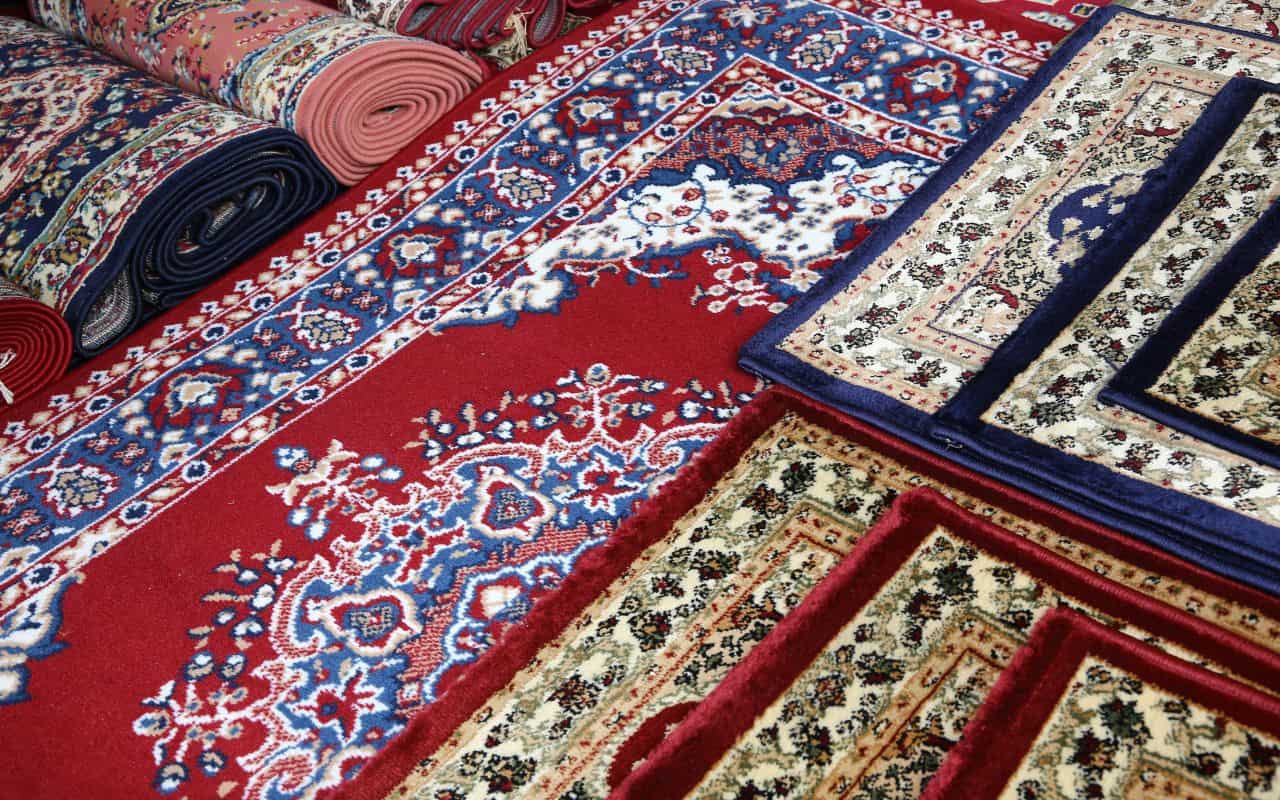Those who are interested in choosing a high-quality rug for their home, or who know they have a high-quality rug and are interested in maintaining it, will stumble upon two terms when they do some research: Persian rugs and Oriental rugs. Both terms might make you think of unusual, high-quality textiles made by hand by artists from faraway places.
And you’d be right. But knowing the difference between these two terms and how they reflect rug quality is important. Armed with knowledge, you can make the right decisions to purchase a rug you’ll be happy with, and then can clean it in the best way possible in order to maintain its quality for years. Below, we offer the knowledge you need to understand these rug quality terms.
What’s The Difference Between Persian Rugs And Oriental Rugs?
Both terms, ‘Persian rug’ and ‘Oriental rug’ may be synonymous with “high-quality” rug in your mind. However, there are varying levels of quality for both rug types. First, you need to understand the difference between persian and oriental rugs. Oriental rugs are any rug made in places which may have been once called the Orient, which use one of two knotting techniques.
The Orient, while now a term people rarely hear, once meant the eastern half of the Roman Empire (after its dissolution). The term then expanded to mean anything east of Europe. There is a significant overlap between the Orient and the Middle East or Southeast Asia, as well as with the rest of Asia. Which countries belong in any of these areas can be controversial. However, the modern-day names for the places once considered to be in the Orient include:
- Iran
- Morocco
- Afghanistan
- Turkey
- Israel
- Egypt
- Iraq
- Armenia
- Kuwait
- Turkmenistan
- China
- India
- Pakistan
- Japan
- Korea
- Tibet
- Nepal
- And more
Hand-woven rugs are not all Oriental rugs. Rugs that are made by hand, even in these countries, are not normally considered Oriental rugs if they do not follow the Oriental rug style. This style includes using one of two knot types: the Persian knot and the Turkish knot. The Persian knot is a single-knot technique, and the Turkish knot is a double-knot technique.
Now that you know what an Oriental rug is, it will make more sense that a Persian rug is a specific kind of Oriental rug. Persian rugs are made in Iran using the Persian knot. While no longer part of an “Empire,” the Iranian people continue the traditions of their Persian roots.
There may also be some confusion about the term ‘Persian rug’. The Persian Empire was larger than modern-day Iran. So, if a rug was made in an area which was once part of the Persian Empire but is not currently part of Iran, some may still consider it a Persian rug (while others may not). Any antique rug made in the Persian style in the Persian Empire is a Persian rug (presuming it follows the style).
Oriental Rug Qualities
Why the desire for Oriental and Persian rugs? Because they are both high-quality and highly sought-after goods. They are often made from only locally available materials, which can give rugs from each area special textures. The designs and themes of the rugs also tend to be highly local to where they are made.
For example, a rug woven in Afghanistan may contain wool and goat hair. It might have natural symbols on it. In contrast, the Turkish Tulu rug, which is also an Oriental rug, is made specifically using Angora goat hair and with an entirely different aesthetic.
If a rug is made by a machine, it is no longer considered an Oriental rug. The qualities of true Oriental rugs often include:
- Durability: Oriental rugs made of quality natural fibers and with high knot counts are highly durable. They can last for decades or even generations, presuming they are cleaned and treated properly.
- Natural Texture: Unlike modern carpets with textiles made of plastic and plastic blends, all Oriental rugs are made of natural fibers, which impart a lovely texture. They are often quite soft. The exact quality of the rug will depend on the specific fiber which was used.
- Design: While there is a wide range of designs common among Oriental rugs from different areas, you’re likely to find something that appeals to you. The rug will impart the feel and aesthetic of the culture it is from.
Persian Rug Qualities
Persian style rugs have characteristics similar to other Oriental rugs. Once, Persian rugs were considered the highest quality. There was social prestige in owning one of these rugs. Now, people tend to find an Oriental rug that suits them best—but there are still good reasons to choose Persian rugs, including their quality and historical value.
Persian rugs have a small range of styles. Usually, they have a design that appears rounded and includes circular “medallion” type shapes. They are often floral and nature-inspired and are found in a range of natural dye colors.
Common Persian rug styles include:
- Tabriz
- Kashan
- Heriz
- Kerman
How To Clean An Oriental Rug
Especially because Oriental rugs last so long and are made of natural fibers, you should be careful about how you clean them. First, you need to know the material of the rug and choose a gentle, suitable carpet cleaner that will work with it and not damage it. Then you can get to cleaning, but know that it must be done gently and by hand. Oriental rugs with special features, such as fringes, may require special cleaning techniques.
How To Clean A Persian Rug
Persian rugs also require gentle hand cleaning with a carefully selected cleaning product. Like all rugs, they also need to be properly dried out after cleaning.
However, tackling the cleaning of an Oriental rug yourself isn’t like other DIY carpet cleaning projects. There are many mistakes and misconceptions about Oriental rug cleaning to be aware of that may cause permanent damage if you aren’t careful. The absolute best way to maintain your Oriental or Persian rug’s quality and beauty for years to come is to have it professionally cleaned by experts.
At Appleby we specialize in Oriental rug cleaning with our exclusive facility designed specifically for cleaning this type of rug. Don’t take a chance on damaging your beautiful piece of home decor – protect your investment by calling in the professionals. Our team of expert cleaners can handle it for you – no stress and no worry! Contact us today at 510-351-5230 or click here.






